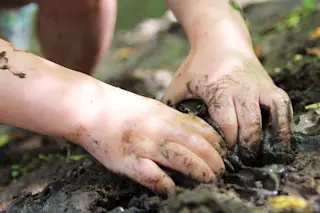Biologists divvy up all animals into 40 or so phyla, depending on the classification scheme. Humans, fish, and other vertebrates, for example, are in the phylum Chordata. Late last year, Peter Funch and Reinhardt Kristensen, zoologists at the University of Copenhagen, announced that they’d found an animal strange enough to merit its own phylum, which they have named Cycliophora. Barely visible to the naked eye, Symbion pandora--the species name--seems to live exclusively on the mouthparts of a Norwegian lobster, which it clings to with an adhesive disk. Using funnel- like round mouths (Cycliophora is Greek for carrying a small wheel), the tiny symbionts eat crumbs from the lobster’s meals and reproduce asexually until the lobster molts, which obliterates their home. Then each S. pandora gives birth to either a dwarf male or a female. The male (one is visible as a small blob on the upper right of the belly of the topmost of the two creatures shown here) lands on another asexual S. pandora and waits for it to produce a female. After being fertilized by the dwarf, the female bears a motile larva and immediately expires; the male, which has no digestive system, dies a little later. The larva either finds a new host or lands on the same lobster’s new lips, starting a new round of feeding and asexual breeding. It would be hard to get an answer from a zoologist if you asked what group S. pandora belongs to, says Funch. It’s quite impossible to place it in one of the existing ones.
Life on Lobster Lips
Discover the phylum Chordata and learn about the unique Cycliophora species, home to Symbion pandora on Norwegian lobsters.
More on Discover
Stay Curious
SubscribeTo The Magazine
Save up to 40% off the cover price when you subscribe to Discover magazine.
Subscribe













